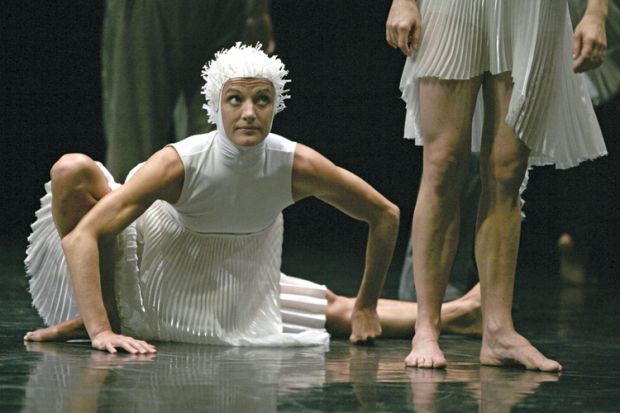A ballet about Einstein, a palace made of children’s teeth and professional photographs of mathematicians have all been singled out by the science writer Simon Singh as examples of wasteful spending on public engagement.
Such projects must be scrutinised much more thoroughly, the author said last week at a conference in Amsterdam, arguing that the best schemes usually did not rely on public subsidy.
Dr Singh criticised a number of projects, including a 2005 ballet inspired by the theory of relativity that was launched to celebrate the centenary of Albert Einstein’s most seminal breakthroughs.
“People hate physics, they hate ballet; all you’ve done is allowed people to hate things more efficiently,” he told the 2:AM Amsterdam conference about alternative metrics on 7 October. “I just don’t understand how this gets vast amounts of money.”
A spokesman for the Institute of Physics, which commissioned the ballet, said that it had cost the organisation about £30,000 and had been a “remarkable success” that “introduced thousands of people, usually disinterested in physics, to inspiring concepts in a beautiful way”.
During his talk, Dr Singh, author of seven books on sciences and maths, said that such a project’s value for money should be compared with the cost of a science teacher.
Drawing from his own experience in science communication, he said there “tended to be a reluctance to rank ideas” in order of effectiveness, and there “doesn’t seem to be this culture of criticism in science communication”.
Also in his line of fire was a project called “Faces of Mathematics”, a series of black-and-white portraits of mathematicians funded by the Engineering and Physical Sciences Research Council. “I’m sure these are lovely mathematicians,” Dr Singh told delegates, “but I don’t quite understand how this is really going to have an impact.”
Nick Gilbert, of the School of Mathematical and Computer Sciences at Heriot-Watt University, which carried out the project with the EPSRC funding, said he was "sorry" Dr Singh had not liked the "relatively inexpensive" initiative.
He said it "was designed to personalise mathematicians, to make them real people" and had received "very positive feedback", although he added that the project finished 12 years ago so did not take advantage of today's digital and social media opportunities. "I'm sure that if we were to devise a new outreach project today, in 2015, we would do things differently," he said.
During a subsequent panel session at 2:AM, Lucy van Hilten, who works in scientific public relations, defended the level of scrutiny of public engagement projects by recounting her time working on a collaboration between a scientist at Imperial College London and an artist to create a “Disney-style palace” made of milk teeth “to teach people about stem cells”.
She admitted that she was “not entirely sure how that teaches you about stem cells” but added that it was “a very beautiful palace”. “That was a very expensive project, and it got Wellcome [Trust] funding, and they had to pitch really, really hard to get that [funding] and they do have to show impact, outreach, [and] promotion,” she explained.
Dr Singh was unconvinced. “What was the point?” he asked. “They got the money because they mentioned the word ‘art’ and ‘artist’ several times, which is always a winner…and it’s innovative. No one has ever built – and why would anyone build? – a palace out of milk teeth. And that’s why those projects get money.”
David Cahill Roots, manager of arts awards at the Wellcome Trust, said that the tooth palace had been given £40,000 by his organisation. The palace had been a “really successful” project that had attracted press attention and a public audience, he said.
Dr Singh told the conference that in his view the best science engagement was “largely dirt cheap, it’s largely grass-roots…and it’s largely profitable. A lot of these things actually generate money, because they’re good.”
He praised Numberphile, a series of hundreds of short YouTube videos about maths that has so far amassed 147 million views. Other YouTube series about physics (Sixty Symbols), computing (Computerphile) and psychology (Quirkology) had also generated huge numbers of views as well, he said.
POSTSCRIPT:
Print headline: Simon Singh criticises wasteful science outreach
Register to continue
Why register?
- Registration is free and only takes a moment
- Once registered, you can read 3 articles a month
- Sign up for our newsletter
Subscribe
Or subscribe for unlimited access to:
- Unlimited access to news, views, insights & reviews
- Digital editions
- Digital access to THE’s university and college rankings analysis
Already registered or a current subscriber? Login






